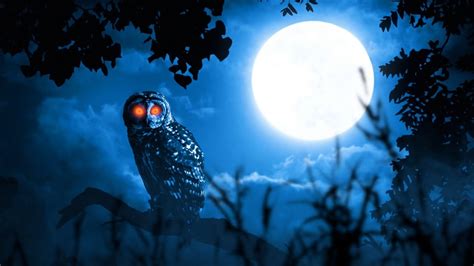Owls, the enigmatic inhabitants of the nocturnal world, are renowned for their distinct and evocative hooting calls. These haunting sounds, resonating through the stillness of the night, have captivated human imagination and folklore for centuries. But what do these hoots actually mean? Join us as we embark on an in-depth exploration of owl hooting, deciphering the messages behind these nocturnal melodies.

Vocal Symphony: Understanding Owl Hoots
Owls possess a wide repertoire of vocalizations, each serving a specific purpose. Hooting, their most well-known call, plays a crucial role in their communication and survival. These hoots vary in frequency, duration, and pattern, conveying nuanced messages to mates, family members, and potential predators.
Greeting and Courtship
Hooting serves as a territorial marker, announcing an owl’s presence to others of its kind. Territorial hooting is typically loud and repetitive, establishing a clear boundary around the owl’s nesting or hunting grounds. During courtship, males often engage in elaborate hooting displays to attract potential mates. These hoots are typically softer and more melodic, designed to showcase the caller’s fitness and suitability.
Parental Care
Parent owls use hooting to communicate with their young. Nestling owls hoot to beg for food, while adult owls hoot to reassure and locate their offspring. The frequency and intensity of these hoots vary depending on the owl species and the age of the chicks.
Predator Detection
Hooting can also serve as a defensive mechanism. When threatened by predators, owls may emit loud, aggressive hoots to scare them off. These hoots are often accompanied by other warning displays, such as wing-flapping and beak-clicking.
Types of Owl Hoots and Their Meanings
The diverse owl family boasts numerous species, each with its unique hooting patterns. Some common owl hoots include:
- Barn Owl: A series of short, high-pitched hoots, often described as “screeching.”
- Great Horned Owl: Deep, resonant hoots that sound like “hoo-hoo-hoo.”
- Screech Owl: A piercing, descending whistle that resembles a “tremolo.”
- Barred Owl: A distinctive, two-note call that sounds like “who-cooks-for-you.”
- Eastern Screech Owl: A series of high-pitched whistles that increase in volume and pitch.
By understanding the different hoots, we can gain insights into the behavior and intentions of these nocturnal predators.
Cultural Interpretations of Owl Hooting
Throughout history, owl hooting has been imbued with cultural significance and superstition.
- Ancient Greece: Owls were considered sacred to Athena, the goddess of wisdom. Their hooting was seen as a sign of good luck and divine guidance.
- Native American Traditions: Many Native American tribes believed that owl hooting carries messages from the spirit world.
- European Folklore: In Europe, owl hooting was often associated with death and misfortune.
While these cultural interpretations have no scientific basis, they reflect the profound impact that owl hooting has had on human societies.
Owl Hooting and Environmental Health
Owl hooting can also provide valuable insights into the health of our ecosystems.
- Environmental Monitoring: Researchers analyze owl hooting patterns to track population trends and assess the impacts of habitat loss and fragmentation.
- Pest Control: Owls play a crucial role in natural pest control. By monitoring owl hooting, we can indirectly assess the abundance of rodents and other pests.
- Habitat Health: Owl hooting can indicate the presence and quality of suitable nesting and hunting habitats.
By studying owl hooting, we can gain valuable information about the overall health and balance of our natural environments.
Applications of Owl Hooting Research
The study of owl hooting has led to innovative applications in various fields:
Bioacoustics: Owl hooting patterns are used to develop acoustic monitoring systems to track bird populations and detect habitat degradation.
Ecology: Owl hooting analysis helps ecologists understand the distribution, abundance, and behavior of different owl species.
Conservation: Owl hooting data is used to identify and protect critical owl habitats and support conservation efforts.
Education: Owl hooting research contributes to educational programs that promote appreciation and understanding of wildlife.
By leveraging the insights gained from studying owl hooting, we can develop innovative strategies to protect these enigmatic creatures and their vital role in our ecosystems.
Conclusion
Owl hooting, a captivating symphony of the night, unravels a complex world of communication, survival, and cultural significance. By deciphering the meanings behind these haunting calls, we gain a deeper appreciation for the intricate balance of our natural world. From their role in greeting and courtship to their significance in environmental health and cultural folklore, owl hooting offers a fascinating glimpse into the mysteries of the night.
